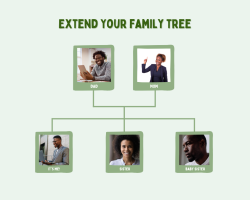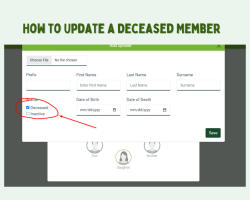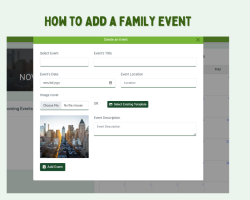The Kikuyu tribe is a Bantu ethnic group in Kenya, belonging to the larger Bantu-speaking people. They are one of the largest ethnic groups in Kenya, concentrated primarily in the Central Province.
Here’s an overview of the Kikuyu way of life.
Family Structure
Amongst the Kikuyu, the family was the basic unit. Most families were nuclear (husband, wife, or wives and children). A sub-clan (mbari) was formed when the children grew up and started their own families. Traditionally, a homestead comprised the extended family with men marrying several wives.
Age sets also held significance, as annually initiated boys formed generation sets that historically wielded authority for 20 to 30 years. Councils of elders, representing distinct age groups, held political power during their tenure.
Clans of the Kikuyu People
God (Ngai) is believed to have created the first man Gikuyu and placed him near Mount Kenya, present-day Muranga County. He was lonely, and he asked for a partner.
Ngai gave him a woman called Mumbi, and she birthed nine daughters. The clans of the Kikuyu were named after these daughters:
- Wanjirũ (Anjiru clan)
- Wanjiku (Anjiku clan)
- Wambũi ( Ambui clan)
- Wangũi or Waithiegeni (Angui or Aithiegeni clan)
- Waithĩra or Wangeci (Aithĩrandũ or Angeci clans)
- Waceera or Wanjeri (Aceera clan)
- Nyambura or Akĩũrũ or Ethaga (Ethaga clan)
- Wairimũ or Gathiigia (Airimu or Agathigia clan)
- Wangarĩ or mũithekahuno (Angari clan/ Aithekahuno)
- Wamũyũ or Warigia ( Gikuyu and Mumbi, the mother to the Aicakamuyu, Warigia, Wanjugu clan
Totems
The Traditional Kikuyu had totems based on clans and were characterized by animals. They later had written symbols, but the only surviving one is of the Anjiru.
It was taboo to eat the animals that symbolized the various totems. The following animals symbolized the totems:
- Ambui – Fish
- Akiuru or Ambura or Ethaga – All wild animals
- Angeci or Aithirandu – Hippo
- Airimu or Agathigia- Warthog
- Angui or Aithiegeni – Impala
- Anjiru -Elephant and all birds
- Aicakamuyu- No totem
- Agaciku – Zebra
- Angari or Aithekahuno – The stomach content of an animal
- Aceera – Thomson’s gazelle (Thwara)
Dialects
Kikuyu has three main dialects. These dialects are Gichugu (Muranga), Mathira (Nyeri), and Ndia (Kiambu).
Age Sets
Age sets formed after boys and girls at puberty are circumcised. Each year a group of boys and girls are initiated into adulthood. They become a political institution that rules for generations of 20 or more years.
After circumcision, the girls became women set for marriage. Boys became warriors in the community. Initiates circumcised at the same time formed an age set called (riika). They were given names that identified them with a particular event or characteristic.
Naming System
The first-born son was given the name of his paternal grandfather. The second son assumed the name of the maternal grandfather.
The first-born daughter was named after her paternal grandmother and the second daughter after her maternal grandmother.
A nickname was also a form of naming. One acquires a nickname which he or she will decide if it would be handed down to others.
Marriage/Courtship
Traditionally, a man would look for a suitable woman to marry. He then proceeds and pays the bride price to her family in a ceremony known as ‘Ruracio.’ The parents of the groom and bride met and engaged in discussions.
They also exchanged gifts and gauged if the couple were a good match. The elders and fathers of both bride and groom sit down and drink a traditional beer (Muratina) as they discuss the dowry.
Dowry
Amongst the Kikuyu, dowry payment was a series of life events. It involved different stages with separate events. The first event involved the groom visiting the bride’s home. They bring two rams indicating that the bride is about to marry.
During the first meeting, the two families get to know each other more and eat together. The intention of the groom is fully known. The bride was officially engaged to be married. The two families then set a date for the second visit.
The next visit involved the planting of a tree branch. It symbolized that the bride was officially taken. The third visit (kuhanda ithiga) involved paying a certain percentage of the bride price. The dowry to be paid was determined by the amount the bride’s father paid for her mother.
Dowry payment is in two categories. The “Atumia” were items for the women, and “Athuri” were the items for the men.
For the “Athuri”, the items comprise a ram ( goima), He-goat ( thenge), Sheep (Ng’ondu), Heifer (mori), Goats counted in tens (mburi cia mirongo) and Beer made from honey (njohi ya uuki).
The” Atumia” included items like Pot (nyungu), Calabashes (ciihuri), Beer for women (njohi ya atumia), Fermented porridge (ushuru wa mukio), and Axes (ithanwa).
Amongst the Kikuyu, once the bride price was paid, the woman could not return to her home. During engagement, the groom would cut a piece of roasted meat from the front limb of the ram and give it to his wife.
It signified that she now belonged to him forever. Once the dowry was paid in full, a ceremony completes the marriage. The man was to pay the bride price fully, or his daughter would not be married.
Polygamy
Traditionally, the Kikuyu are polygamous. They were allowed to marry as many wives as they wanted, and they would live in one homestead as one. A man had his hut, and the wives had theirs. They lived in harmony, and the father was responsible for raising his children with their mothers.
Gender Roles in Marriage
The women in the Kikuyu community cared for the kids, farming, and house chores. They also ensured that the children grew up responsibly and knew the community’s norms. The men helped on the farm and offered security to the family.
Widows underwent a lot of neglect, discrimination, and cultural oppression. More so, if the late husband did not pay the dowry in full, the children and their mother would lose their rights to resources and suffer a lack of social acceptance.
Divorce
Divorce was never an option among the Kikuyu. Marriage was a form of an oath, and a couple could never split up. They stayed married but lived in separate houses.
However, if the woman decides to leave, the man is made to sit down with his legs spread out. The woman crossed his legs seven times. This signified the end of their marriage since it was taboo to cross one’s legs, and seven was considered an unlucky number among the Kikuyu.
Inheritance
Kikuyu tradition allowed that only males were entitled to inheritance. On rare occasions, the mother was given the right to inherit the properties if the male children were still young and couldn’t be responsible.
A widow had no right to inherit her late husband’s wealth. They believed the male child was the rightful heir. He would be responsible for taking care of his mother and other siblings.
Death
Traditionally, the Kikuyu were not allowed to touch the dead. Those severely sick or aged were not left to die in their homesteads. They would be taken to a forest or a place near the homestead.
A leash was tied to the right hand that was tugged occasionally to determine if the person was still alive. A lack of response meant that the person was already dead. The dead body was then taken to a burial ground (kĩbĩrĩra), where rituals were performed, and the body was wrapped in a sleeping position. The burial site would face the homestead. Other beliefs state that the dead among the Kikuyu were left to be devoured by wild animals.
The dead became ancestors and were honored and appeased by bearing and naming children after them. The living dead were respected in the community, and peace offerings were offered as food and burnt sacrifices to appease them.
Do you love culture? Would you love to preserve your family stories? Download Oret App to create your family tree and preserve your history.
Share this Post








